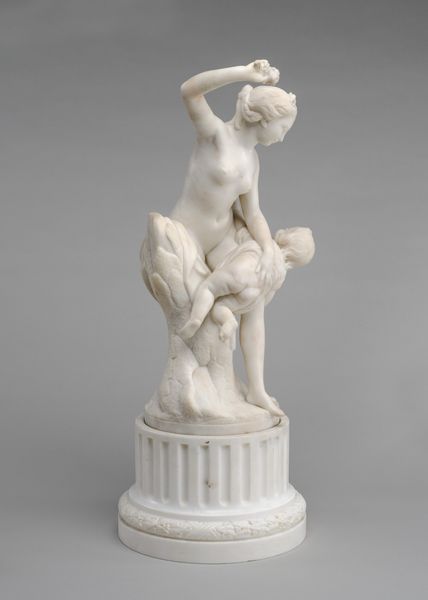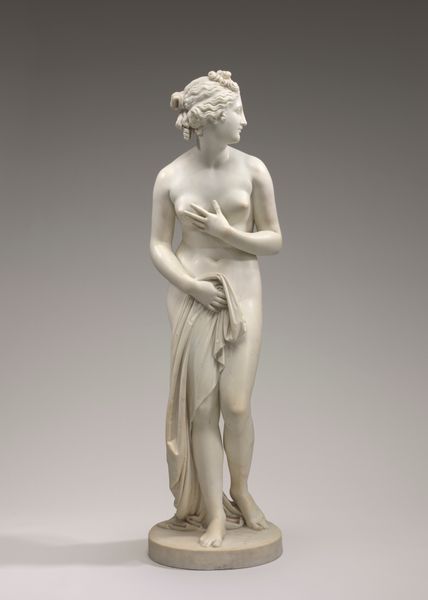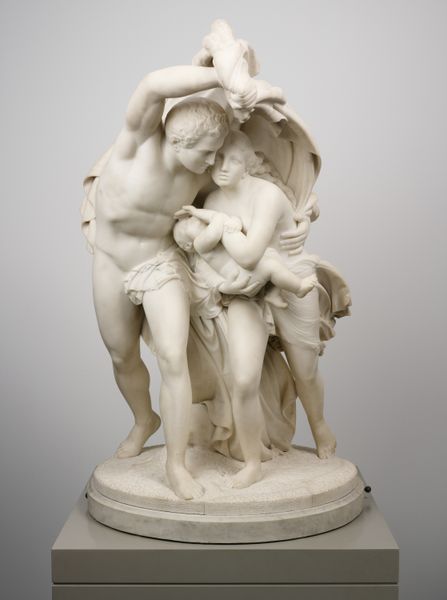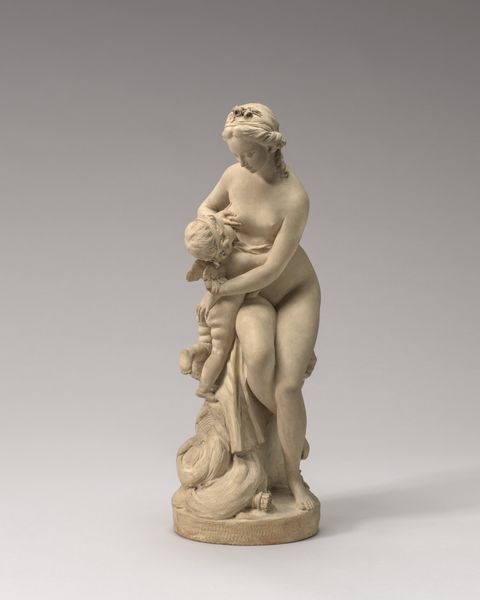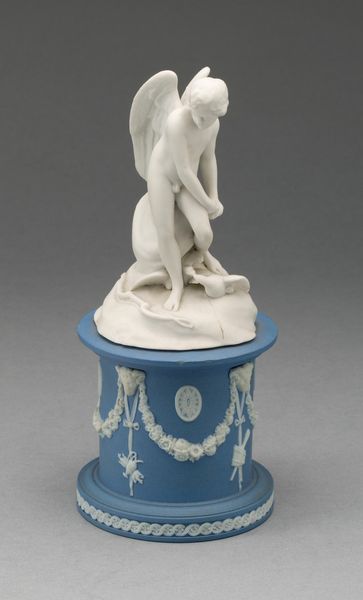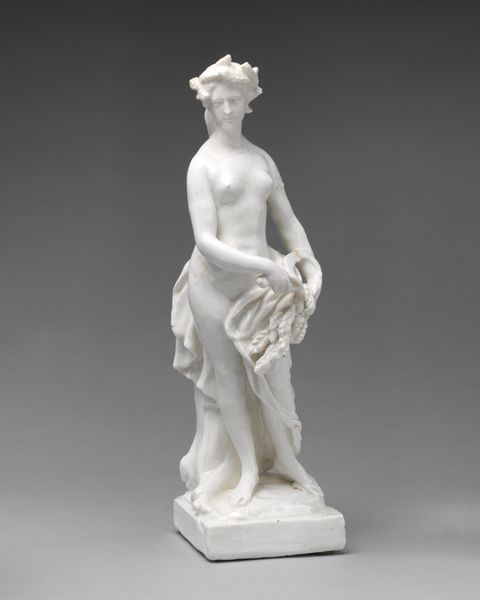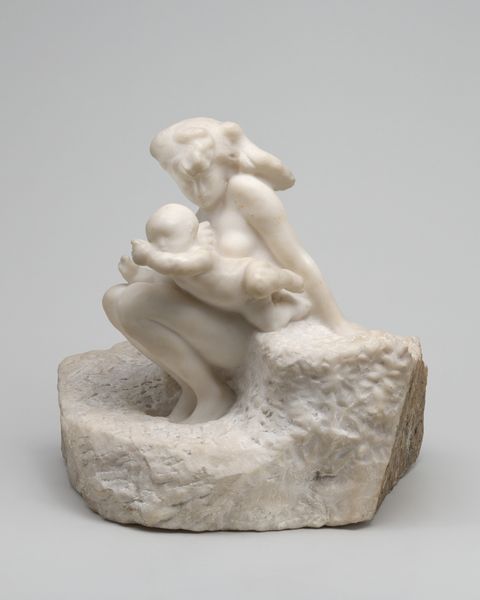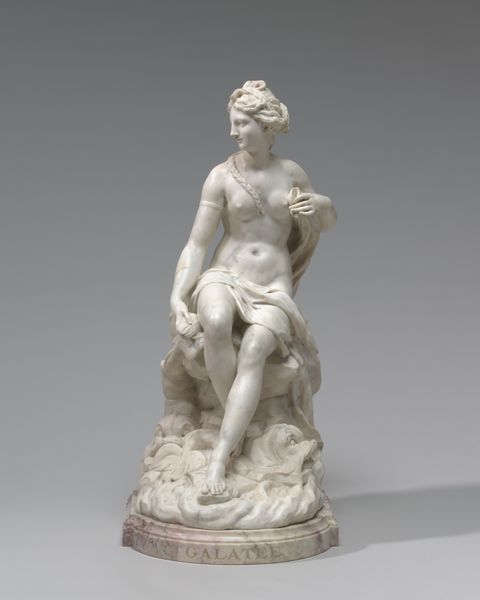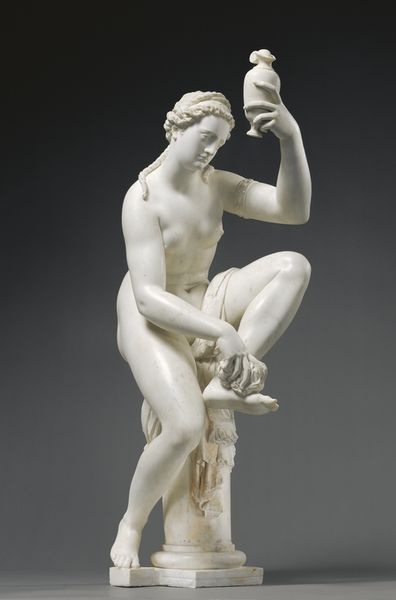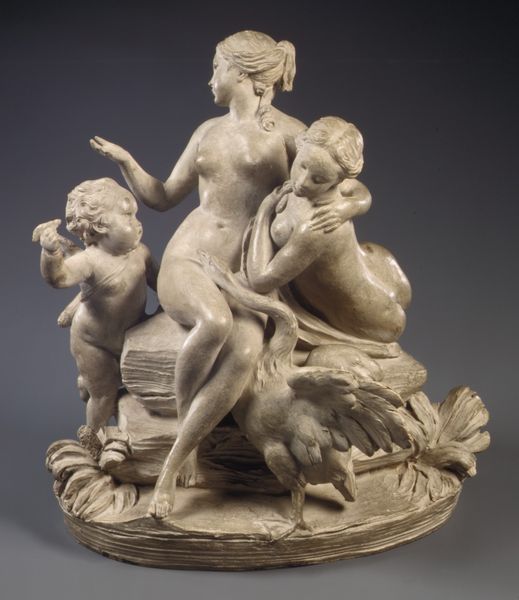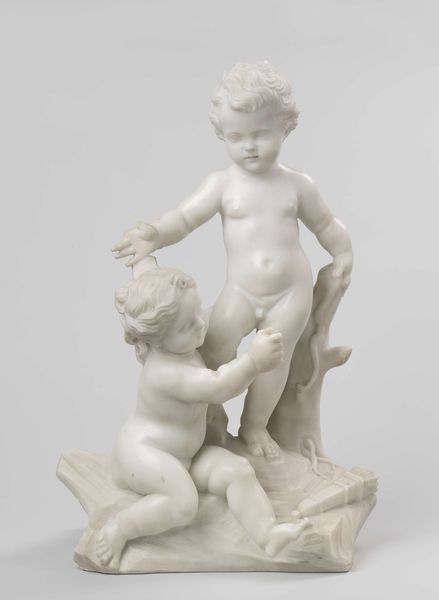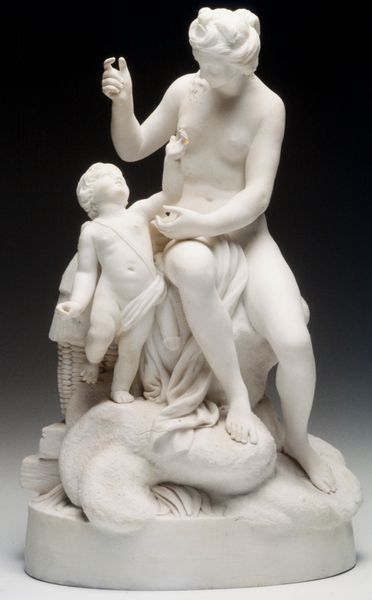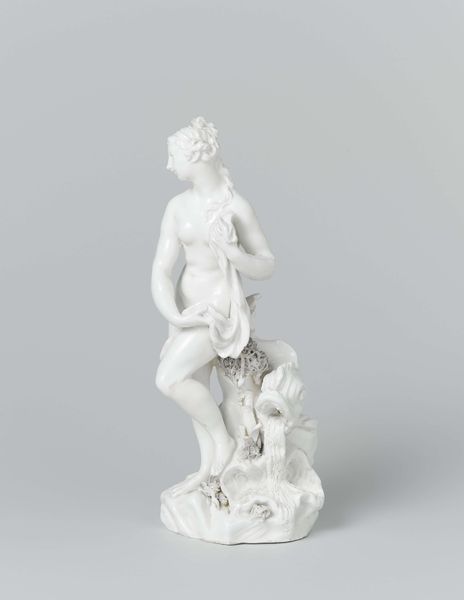
Dimensions: overall: 42.55 × 17.78 × 17.78 cm (16 3/4 × 7 × 7 in.)
Copyright: National Gallery of Art: CC0 1.0
Etienne-Maurice Falconet carved this Venus and Cupid sculpture in the 18th century, using marble. The work references classical mythology, a common theme during the period of its creation. Falconet was a director at the Sèvres porcelain factory, an institution with close ties to the French monarchy. Royal patronage influenced the choice of subject and style. The graceful forms and polished surfaces reflect aristocratic tastes. But, rather than simply upholding tradition, Falconet subtly challenges the conventions of his time. While idealized, Venus is also depicted in an intimate, maternal moment. By combining sensuality with tenderness, Falconet infused the classical subject with a new, human quality. Historians consult period documents, such as artists’ letters and exhibition catalogs, to understand the complex cultural values that informed the making of art. The meaning of this sculpture is not fixed, but shifts as social and institutional contexts change.
Comments
No comments
Be the first to comment and join the conversation on the ultimate creative platform.
